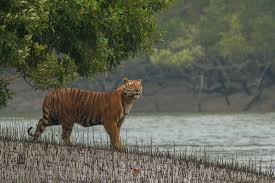Khulna, often referred to as the “Heart of Southern Bangladesh,” is a vibrant city known for its rich cultural heritage, natural beauty, and significant economic contributions. Nestled along the banks of the Rupsha and Bhairab rivers, Khulna serves as a gateway to the Sundarbans, the largest mangrove forest in the world and a UNESCO World Heritage Site. This region is home to the majestic Royal Bengal Tiger and a diverse array of wildlife.
The city is also a hub for trade and commerce, with industries such as jute processing, shipbuilding, and shrimp farming playing crucial roles in its economy. Khulna’s warm hospitality, historical landmarks, and lush greenery make it a unique destination for both locals and tourists. Whether exploring its bustling markets, savoring local delicacies, or venturing into its natural wonders, Khulna truly captures the essence of Southern Bangladesh.
Historical Roots of Khulna
Khulna, a region rich in history and natural beauty, has played a significant role throughout various periods. Initially part of the ancient kingdom of Vanga, it gained importance during the Mughal era as a thriving trade hub, leveraging its river networks for commerce. Under British colonial rule, Khulna continued to develop, earning recognition for its shipbuilding industry. Officially designated as a district in 1882, the area later became a focal point during Bangladesh’s 1971 Liberation War, with the Gallamari Memorial Monument standing as a tribute to the martyrs.
Today, Khulna is perhaps best known for the Sundarbans, the world’s largest mangrove forest, spanning over 10,000 square kilometers. This UNESCO World Heritage Site is home to diverse wildlife, including the iconic Royal Bengal Tiger, spotted deer, crocodiles, and numerous bird species. Visitors to the Sundarbans can enjoy a range of unique activities such as wildlife safaris, boat tours through its intricate waterways, and visits to the Karamjol Wildlife Center. Traditional practices like fishing and honey collection also provide a glimpse into the livelihoods of local communities.
The Rivers of Khulna
Khulna, a region in southern Bangladesh, is renowned for its intricate network of rivers and waterways. These rivers play a vital role in the lives of the local people, supporting agriculture, transportation, fishing, and daily livelihoods. Among the most prominent rivers in Khulna are the Rupsha, Bhairab, Pasur, and Shibsa. The Sundarbans, the world’s largest mangrove forest and a UNESCO World Heritage Site, is also nourished by these rivers as they flow into the Bay of Bengal. The rivers of Khulna not only sustain the region’s ecosystem but also offer breathtaking natural beauty, attracting visitors from around the world.
Economic Importance of Khulna
Khulna stands out as a critical economic hub in Bangladesh, playing a pivotal role in the country’s financial landscape. The city thrives on its diverse industries, including:
– **Shipbuilding Industry**: Leveraging the strategic locations of the Rupsha and Passur rivers, Khulna has established itself as a significant player in the global shipbuilding market, with its shipyards exporting vessels internationally.
– **Shrimp Farming**: As the leading region for shrimp farming in Bangladesh, Khulna makes a substantial contribution to the nation’s foreign exchange earnings.
– **Jute Industry**: Despite evolving industrial trends, jute production, historically referred to as the “Golden Fiber,” continues to be a cornerstone of Khulna’s economy.
– **Textiles and Leather**: The city is also witnessing growth in its textile and leather sectors, further diversifying its economic base.
These industries collectively underscore Khulna’s importance in driving national development and global trade.
Upozilas Of Khulna
- Khulna Sadar: The administrative and commercial center of the district.
- Dacope: A vital gateway to the Sundarbans.
- Batiaghata: Known for its agricultural landscapes and serene villages.
- Dumuria: Famous for its cultural heritage and crafts.
- Koyra: A hotspot for eco-tourism, especially Sundarbans excursions.
- Paikgachha: A center for salt production and rural tourism.
- Phultala: Renowned for its bustling markets and community life.
- Rupsha: The district’s economic backbone, thanks to its riverside industries.
- Terokhada: A quiet upazila showcasing traditional rural life.
Tourist Attractions in Khulna
Dakshindihi Rabindra Complex

- Sundarbans Mangrove Forest: A natural wonder that tops every visitor’s itinerary.
- Dakshindihi Rabindra Complex: The ancestral home of Rabindranath Tagore’s in-laws.
- Dublar Char: A serene island within the Sundarbans, perfect for fishing and relaxation.
- Khulna Divisional Museum: A treasure trove of artifacts showcasing the region’s rich history.
- Rupsha Bridge: A modern architectural landmark, offering stunning views of the river.
Culinary Delights of Khulna
Khulna’s cuisine reflects its proximity to rivers and forests, offering a unique gastronomic experience:
- Chingri Malai Curry: Prawns cooked in rich coconut milk, a local specialty.
- Hilsa Fish Dishes: The region’s rivers produce some of the finest hilsa.
- Sundarbans Honey: Collected by traditional honey hunters, this is a natural and healthy treat.
Why Visit?
Khulna, a city in southwestern Bangladesh, offers a unique blend of natural beauty, cultural heritage, and historical significance. It serves as a gateway to the Sundarbans, the largest mangrove forest in the world and a UNESCO World Heritage Site, home to the majestic Royal Bengal Tigers. Visitors can explore breathtaking landscapes, experience serene boat rides through the waterways, and witness diverse wildlife.
In addition to its natural attractions, Khulna boasts a rich cultural scene, with traditional crafts, vibrant markets, and local cuisine that reflect the region’s heritage. Historical landmarks like the Khan Jahan Ali Bridge and various ancient mosques add depth to the city’s charm. Whether you’re an adventurer, history enthusiast, or nature lover, Khulna has something special to offer.

